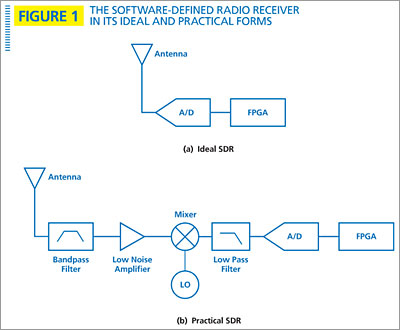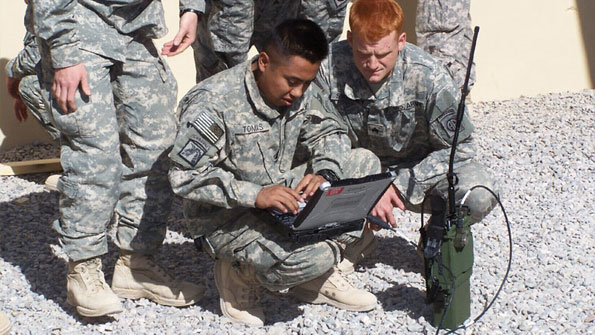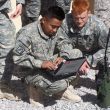Software-defined radio: Simply a better way to do radio
Software-defined radio: Simply a better way to do radio
A version of this article appeared in the November 2012 print issue with the headline: Simply a better way to do radio.
Today’s land mobile radios are largely software oriented, the result of a quiet 25-year revolution in radio design. The software-defined radio (SDR) allows the designer to provide multiple airlink standards on a single hardware platform, accelerating product development and making upgrades quick and easy.
The SDR Concept
The IEEE defines a software-defined radio as a “radio in which some or all of the physical layer functions are software-defined.” Physical-layer functions include, but are not limited to, tuning, antenna diversity, down conversion, synchronization, modulation and demodulation. The Holy Grail for software radio designers is a device with the antenna connected directly to an analog-to-digital (A/D) converter, as shown in Figure 1(a). In this idealized implementation, the radio signal immediately is digitized and there are no hardware-specific components. In other words, one hardware platform handles all frequencies and all airlink standards.
The receiver of Figure 1(a) cannot be realized in practice. Using today’s A/D converters, the depicted setup would result in an incredibly bad receiver. The A/D converter does not have infinite bandwidth or infinite dynamic range, and all A/D converters have poor noise figures. For these reasons, contemporary land-mobile-radio receivers employ a bandpass filter and low noise amplifier (LNA) in front of a conventional superheterodyne downconverter, as shown in Figure 1(b). This approach provides good sensitivity and dynamic range using components that are available today.
 Until recently, cellular phones and many land mobile radios employed application-specific integrated circuits (ASIC) to implement the airlink standard (also known as the waveform). ASICs employ many software-radio concepts, but still rely on hardware-specific implementations. Today, it is common to implement the airlink standard in a field-programmable gate array (FPGA), which is a universal programmable-hardware platform.
Until recently, cellular phones and many land mobile radios employed application-specific integrated circuits (ASIC) to implement the airlink standard (also known as the waveform). ASICs employ many software-radio concepts, but still rely on hardware-specific implementations. Today, it is common to implement the airlink standard in a field-programmable gate array (FPGA), which is a universal programmable-hardware platform.
Two practical limitations of SDRs are processor speed and memory. Like computers, new radios always need more speed and storage; for this reason, no hardware platform has an infinite life. Software-defined radio allows one to extend the life of the hardware platform, finish the design after the hardware is developed, and maintain the same hardware architecture while upgrading processors and memory. Another advantage of an SDR is that the software exists independently of the hardware; therefore, it can be ported easily to new hardware designs.
History
Software-defined radio has its roots in the military, and early research was funded by the U.S. Department of Defense. A team at E-Systems, Inc. (now Raytheon) coined the term “software radio” in 1984 while developing a proof-of-concept unit. This prototype provided programmable interference cancellation using adaptive digital filters, which were new at the time. The military saw the utility of software radios early, primarily because of the need for interoperability between its branches and between U.S. and NATO troops. The military is a natural for software radio, because its need for interoperability, encryption and anti-jamming lends itself to software implementations.
Joseph Mitola coined the term “software-defined radio” and published the first paper on the subject in 1991. In 1992, the U.S. Army started a software radio project called SpeakEasy, which had the goal of developing a radio that provided AM, FM and SINCGARS waveforms, from 2 MHz to 2 GHz.
Adoption
According to the SDR Forum (www.wirelessinnovation.org), more than 93% of cellular base stations use SDR technology, and almost 1 billion software-defined cell phones were shipped in 2011. Almost all tactical radios sold to the military and public safety land mobile radios use SDR technology. The startling transition from hardware to software radios during the past 10 years is largely unknown to the public, because functionality remains the same. Generally, the consumer is most interested in whether his phone is 3G or 4G, which in his mind equates to greater speed. But, at its core, software radio simply is a better way to do radio.










